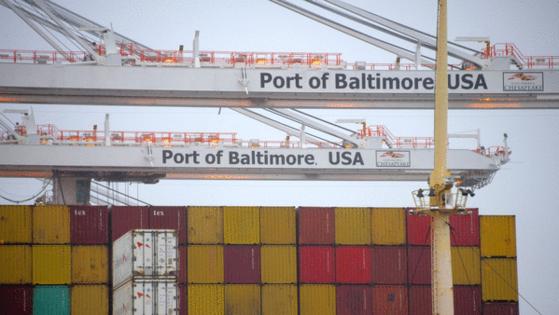Dali-sized cargo ship 'briefly lost engine power' as it left Port of Baltimore
Published in News & Features
BALTIMORE — A 965-foot container ship “briefly lost engine power” as it departed the Seagirt Marine Terminal at the Port of Baltimore early Monday morning, but it was able to return to its berth according to Maryland Port Administration spokesperson Richard Scher.
The ship, a Liberia-flagged vessel named the Bellavia, departed Baltimore around 2:30 a.m., but almost immediately ran into trouble. Marine tracking data indicates the ship made very little progress — no more than 1,000 or 2,000 feet — before it turned around and returned to a berth at Seagirt.
“It was able to quickly reengage and return to Seagirt under its own power,” Scher wrote in an emailed response to questions from The Baltimore Sun.
The ship then received repairs in Baltimore, Scher said, and less than 18 hours later, the U.S. Coast Guard cleared the ship for departure. It left Monday evening and sailed under the Chesapeake Bay Bridge near Annapolis around 8 p.m., bound for New York.
The incident shares some parallels with the Francis Scott Key Bridge collapse in the early hours of March 26, when the 984-foot container ship Dali lost power before striking and collapsing the span, killing six construction workers and blocking Baltimore’s shipping channel for more than two months. More than 50,000 tons of wreckage fell into the Patapsco River, but the channel was fully reopened to traffic last month and the port is starting to return to pre-incident activity levels.
The Bellavia, like the Dali, was made by Hyundai and the two ships share similar dimensions.
A key difference in the two instances, however, is that the Bellavia was able to quickly regain power. Additionally, tugboats — which provide security for larger vessels navigating harbors — were still tied onto the Bellavia at the time that it lost power and became a “dead ship,” an industry term for a ship without power. Tugboats had assisted the Dali away from the Port of Baltimore, in accordance with state regulations, but were not required to escort the ship under the Key Bridge.
A vessel without power underscores the potential dangers that massive ships can pose to the infrastructure in and around ports. In addition to the calamity of the Key Bridge collapse, a 997-foot ship lost control of its engines and sped through the harbor in Charleston, S.C., one month ago, prompting the closure of a bridge there.
Since the Key Bridge disaster, the Coast Guard has launched a probe to “examine the implications of larger, more complex vessels and evolving maritime traffic patterns on port infrastructure.”
Thousands of ships come in and out of Baltimore, one of the nation’s busiest ports, annually and it is not unheard of for a ship to lose power. At least 42 cargo vessels lost propulsion, power or steering while sailing in Maryland waters from the start of 2021 to April 2024, according to a Baltimore Sun analysis, including seven in direct proximity to Seagirt Marine Terminal.
______
©2024 The Baltimore Sun. Visit at baltimoresun.com. Distributed by Tribune Content Agency, LLC.







Comments